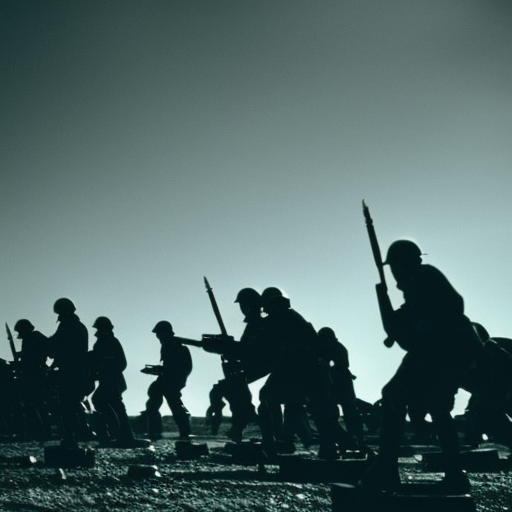Battle of Dunkirk: A Miraculous Evacuation
The Battle of Dunkirk, also known as Operation Dynamo, was a pivotal event during World War II that took place in Dunkirk, France, from May 26 to June 4, 1940. It involved the evacuation of Allied soldiers who were trapped by the German army on the beaches of Dunkirk. The operation was a remarkable success, as over 330,000 soldiers were rescued and brought back to Britain, despite facing significant challenges and dangers.
The Situation at Dunkirk
In May 1940, German forces launched a massive offensive against France, rapidly advancing through the country. As a result, the British Expeditionary Force (BEF) and other Allied troops found themselves surrounded and trapped in the coastal town of Dunkirk. With the German army closing in, the situation seemed dire for the stranded soldiers.
The Evacuation Plan
Realizing the urgent need to rescue the trapped troops, the British initiated Operation Dynamo. The plan involved using a vast array of naval vessels, including warships, merchant ships, and even civilian boats, to evacuate the soldiers from the beaches of Dunkirk. The operation was led by Vice-Admiral Bertram Ramsay and coordinated with the support of the Royal Navy.
The Miracle of the Little Ships
One of the most remarkable aspects of the Dunkirk evacuation was the involvement of hundreds of small civilian boats, known as the “Little Ships of Dunkirk.” These boats, including fishing boats, pleasure craft, and yachts, were called upon to assist in the rescue operation. They played a crucial role in ferrying soldiers from the beaches to the larger ships waiting offshore, as the shallow waters prevented larger vessels from reaching the shore.
The Evacuation Process
The evacuation process was fraught with danger, as the beaches were constantly under attack from German aircraft and artillery. The soldiers had to endure relentless bombings and strafing runs while waiting in long queues to board the ships. Despite the perilous conditions, the evacuation continued day and night, with soldiers being rescued from the beaches and brought to safety.
Operation Dynamo’s Success
Despite the challenges, Operation Dynamo was a resounding success. Over the course of nine days, a total of 338,226 soldiers were evacuated from Dunkirk, including 140,000 French troops. The operation exceeded all expectations, as the initial goal was to rescue only 45,000 men. The successful evacuation of such a large number of troops provided a much-needed boost to British morale during a time of great uncertainty.
Aftermath and Significance
The Battle of Dunkirk had significant implications for the outcome of World War II. While the evacuation itself was a success, the Allies had to abandon much of their equipment and vehicles in the process. However, the rescue operation allowed the BEF to regroup and continue fighting, rather than being captured or destroyed by the advancing German forces.
The Battle of Dunkirk also had a profound impact on the home front. The successful evacuation of such a large number of soldiers, against all odds, became a symbol of British resilience and determination. It bolstered national morale and inspired a sense of unity and determination to continue the fight against Nazi Germany.
In conclusion, the Battle of Dunkirk was a remarkable event that showcased the bravery and resourcefulness of the Allied forces. The successful evacuation of over 330,000 soldiers from the beaches of Dunkirk, including the involvement of civilian boats, was a testament to the indomitable spirit of the British people. The operation not only saved countless lives but also provided a much-needed morale boost during a critical phase of World War II.












